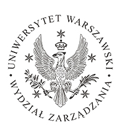ORCID
Paweł Witkowski 0000-0003-0080-3893
Abstract
The aim of the study is to assess the impact of the EU ETS on the profitability and the excess rate of return (ERR), which is the difference between profitability and the cost of capital. The study was conducted between 2008 and 2016 on a sample of 91 very large companies covered by the EU ETS. Models for panel data were used for the analysis. No statistically significant relationship between emission allowances and return on equity was found. However, a statistically significant relationship between emission allowances and ERR was detected. This could mean that companies were able to pass on the cost of emission allowances to their counterparties. However, greenhouse gas emissions entail greater exposure to the price risk of emission allowances, which the companies were unable to diversify, resulting in an increase in the cost of equity. Moreover, the study shows that the effect of emission allowances on the value of companies may not be symmetrical, as the variable under study was only statistically significant when it took on positive values (GHG emissions were higher than the allocation). As proven, an analysis of the excess returns can help to explain some of the inconsistencies and contribute to a better understanding of the impact of the EU ETS on the value of companies. The research carried out helps to answer the question of who bears the costs of reducing greenhouse gases and is it true that there are no costs for companies and therefore the introduction of the EU ETS has not affected their value. The conclusions of this study may be of interest to policymakers, investors but also to the public.
Recommended Citation
Witkowski, Paweł
(2024)
"The Concept of Using the Excess Rate of Return
in the Study of the Impact of EU ETS
on the Value of Enterprises,"
Journal of Banking and Financial Economics: Vol. 2022:
No.
18, Article 6.
DOI: 10.7172/2353-6845.jbfe.2022.2.6
Available at:
https://press.wz.uw.edu.pl/jbfe/vol2022/iss18/6
First Page
72
Last Page
93
Page Count
22
Received Date
15 May 2022
Revised Date
23 October 2022
Accept Date
27 October 2022
Online Available Date
27 October 2022
DOI
10.7172/2353-6845.jbfe.2022.2.6
JEL Code
G320; G380; H220; H230
Publisher
University of Warsaw


